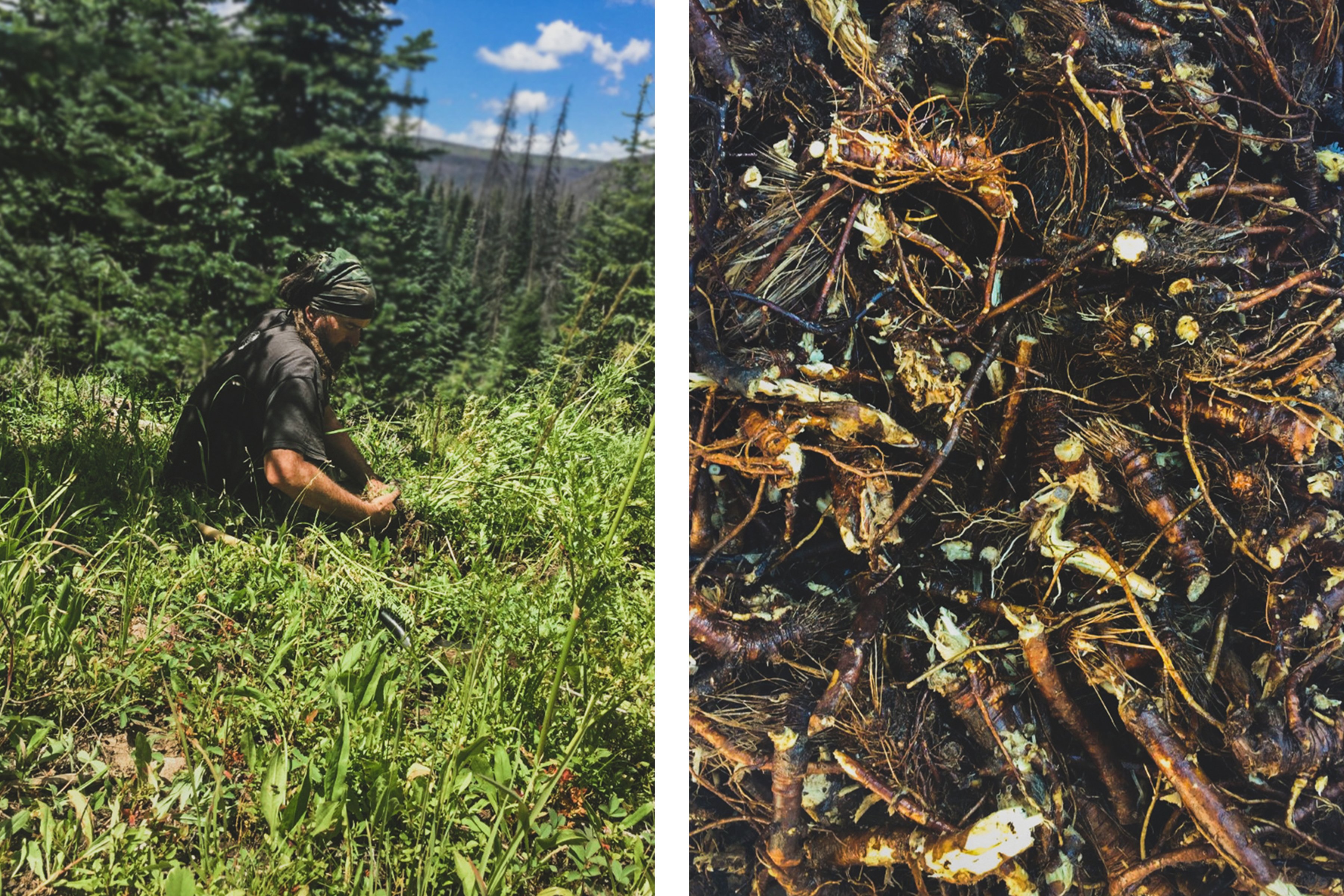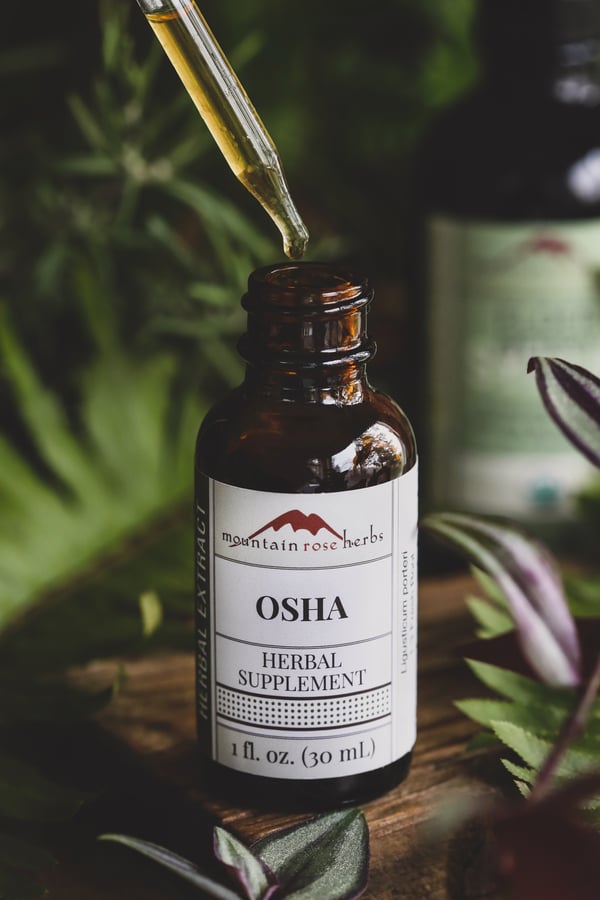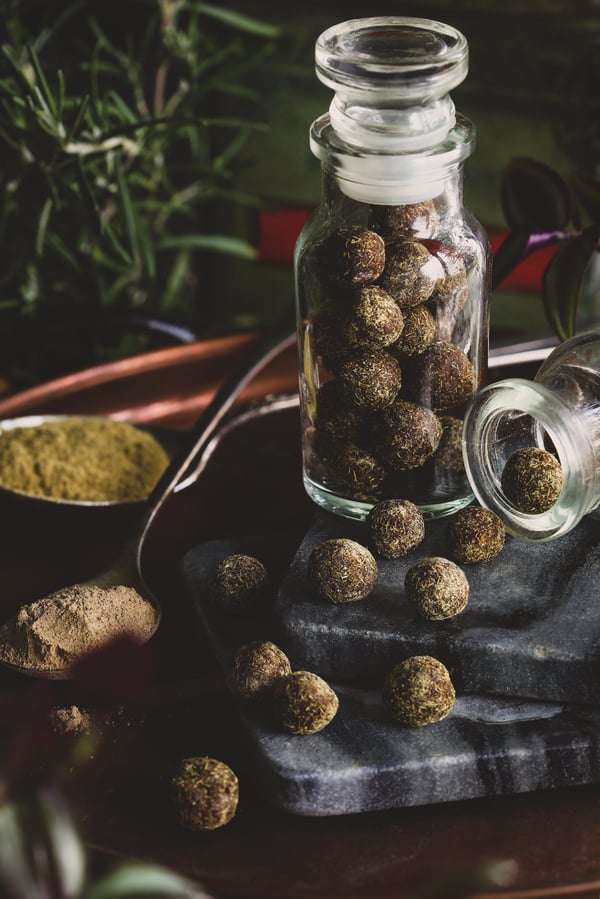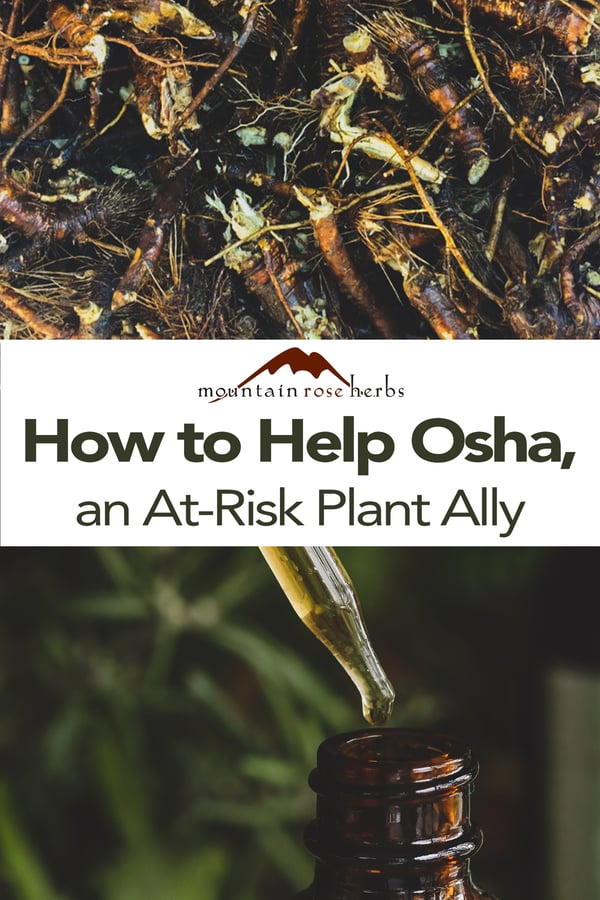Photo courtesy of Susan Leopold, PhD, Executive Director at United Plant Savers.
Osha root (Ligusticum porteri) has been in use as an herbal medicine, incense, food, and for ceremonial purposes for thousands of years. When European colonists arrived in North America, osha was already being widely used by First Nations People in the American Southwest and Mexico to treat a variety of conditions, particularly those involving the upper respiratory and gastrointestinal tracts. The Zuni people chewed the root in healing rituals and the Tarahumara people used it ritualistically in protection ceremonies. This herbal ally has been generously gifting itself to humans on our continent for millennia, and its renown has spread to other parts of the world. Unfortunately, this increasing popularity has shined a light on osha’s one significant problem—virtually all commercial osha is wildharvested because this independent herb doesn’t do well as a cultivated crop. This limitation combined with the ever-increasing demand for osha has many herbalists concerned about the viability and long-term sustainability of this precious botanical. Let’s take a deeper dive into osha.
Botany: What is Osha?
There are twelve ligusticum species, but only Ligusticum porteri is true osha. In the American West, it is considered a keystone plant species because it is a vital source of food and shelter for other species. Osha root—also called Bear Medicine or Bear Root—is a member of the Apiaceae (Umbelliferae) family, which also includes carrots, dill, anise, fennel, angelica, hemlock, cow parsley, etc. Osha grows up to three feet tall and has bright green parsley- or carrot-like leaves.
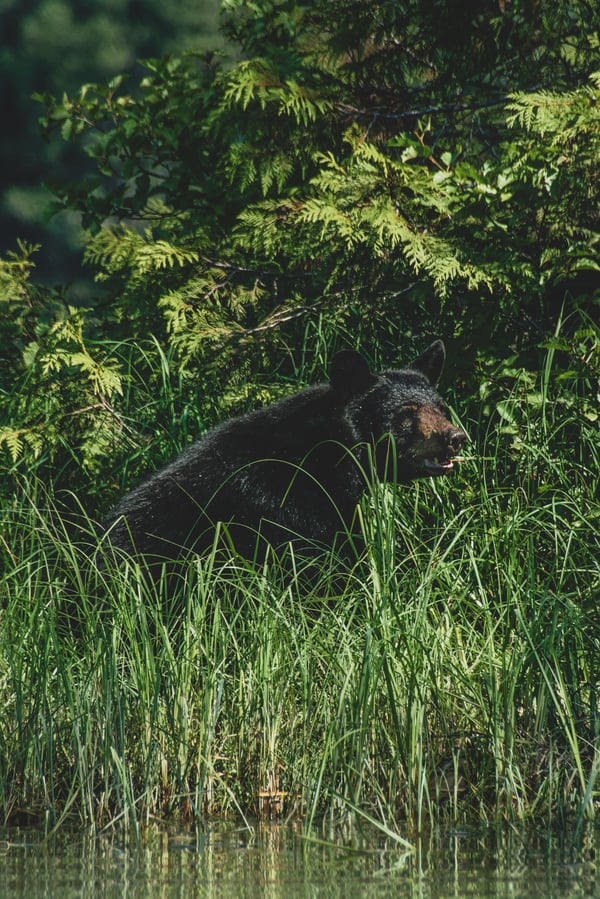
Osha is a perennial native in the high elevations (9,000 feet and above) of the Rocky Mountains and northwestern Mexico, where it is a favorite of both humans and bears. People have long noted that bears in the region seek out osha when they first emerge from hibernation, both eating the plant and chewing it into a mash which they rub into their fur, hence “bear medicine.” In turn, osha depends on the bears and other local wildlife to spread its seeds. Each of the little flowers that make up osha’s umbels becomes a seed that can catch in the fur of a passing animal to be dropped to the soil further along the animal’s journey.
Wildharvesters dig up osha to get the dark, wrinkled roots. However, it is easy to confuse osha with poisonous hemlock, which has similar flat umbels of white flowers, so it is imperative to know the difference. Osha root is generally ingested as a tea, capsule, or extract for immune system support or to offer relief from cold and flu symptoms, digestive issues, and more.
Please consult a certified herbalist and/or your doctor before adding osha to your wellness regimen, and note that pregnant and breastfeeding women should avoid osha in all forms.
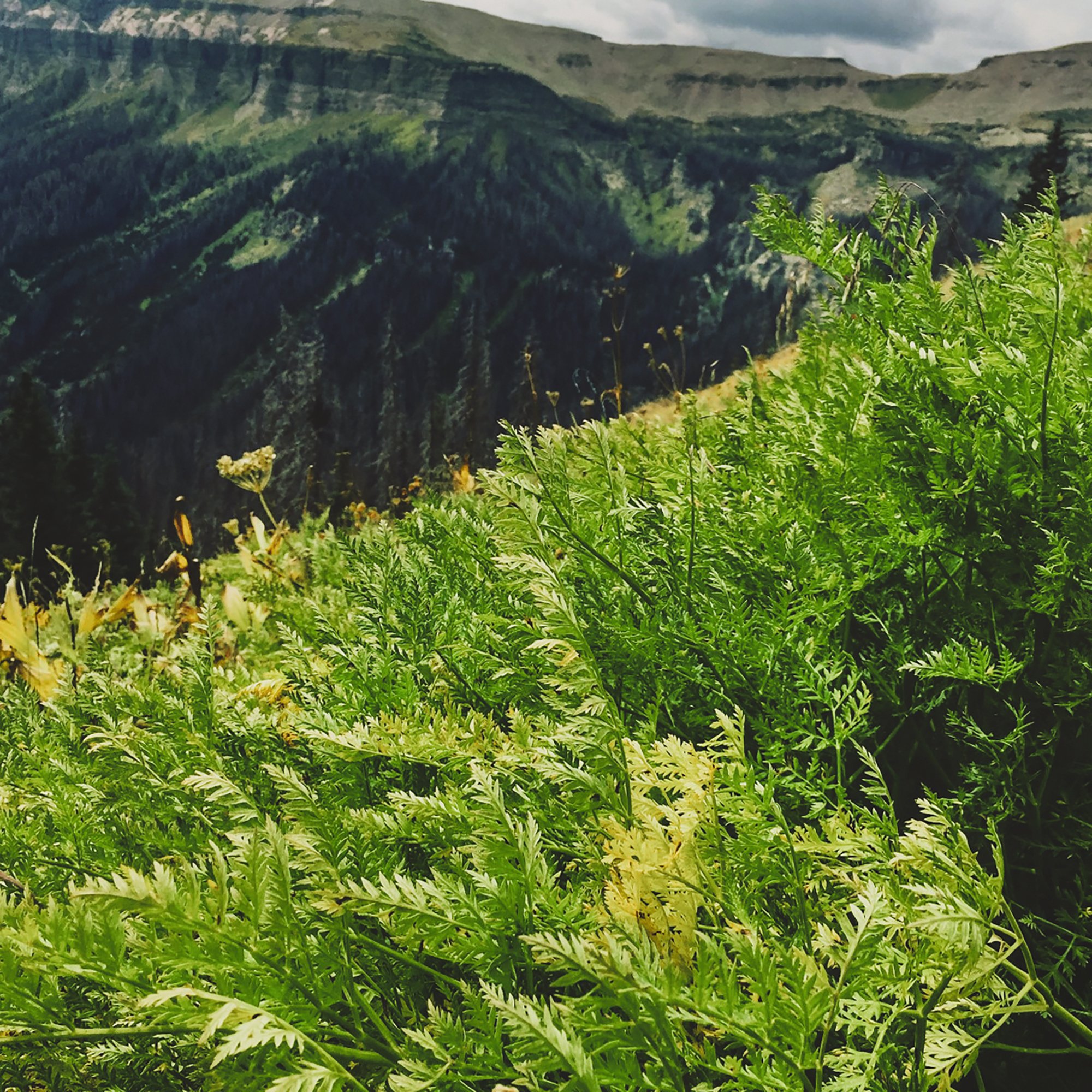
Photo courtesy of Susan Leopold, PhD, Executive Director at United Plant Savers.
Is Osha Endangered?
Although osha is not yet classified as endangered, United Plant Savers (Ups) has placed it on the “At-Risk” list. It is doing well in some areas of its range and is alarmingly over-harvested in others. In response to this troubling reality, Mountain Rose Herbs supports an important osha research project that is being overseen by UpS in collaboration with botanists at several state universities, state forestry services, and the American Herbal Products Association (AHPA). Over twenty-plus years, the project has funded a number of studies that look at the impact of commercial osha harvesting on the long-term sustainability of this herb. Although it is too early to draw final conclusions, initial results from these studies are heartening and seem to indicate that when harvested responsibly, with sustainability in mind, osha will regenerate and replenish itself.
The studies also revealed important information that may help us support osha better. For instance, recent studies in the high elevations of southern Colorado, where conifers have been devastated by a bark beetle infestation, revealed that this tragic die-off of trees has in turn created a new opportunity for osha in that area and the plant has taken full advantage.
To put this more succinctly, we know osha is a resilient botanical with a knack for surviving. It is the sheer volume of irresponsible harvesting that is at the core of this plant’s current troubles. If we refuse to support harvesting practices that are geared toward profit instead of sustainability, we may be able to take enough pressure off this remarkable plant to allow it to regenerate across its native range.
Take Action to Help Osha
#1: Pay Attention to What you Purchase
If you are purchasing osha, ask questions. Make sure you know where and how your osha was harvested, and purchase only sustainably harvested roots.
The osha root extract and Osha Ultra Syrup that Mountain Rose Herbs sells use osha that has been sustainably collected in collaboration with the ongoing UpS osha research project mentioned above. Collected in the Rocky Mountains of Colorado, the seasonal harvests are closely overseen by UpS using the findings from more than two decades of research.
#2: Substitute Osha for plants with similar actions
There are a number of cultivated and sustainably harvested herbs that make good substitutes for osha in many formulations. Unless you are able to acquire sustainably harvested osha, consider using one or more of the following:
- For respiratory support, substitute elecampane root, lovage root, or angelica root. (Do not use angelica root if you are pregnant or nursing.)*
- For immune support, substitute acerola berry powder, elderberry, echinacea root, or ashwagandha root.*
- For demulcent support, substitute marshmallow root (slippery elm is a good substitute too, but is also struggling.)*
- For throat-soothing support, substitute wild cherry bark.*
Steven’s Throat-Soothing Pastille Recipe
This recipe for throat-soothing, lung-supporting pastilles (or lozenges) is the herbal genius of our Director of Quality and Regulatory Affairs, Steven Yeager, who is also a long-time teacher at the Columbine School of Botanical Studies and an AHPA board member. These little pastilles are a godsend when the winter crud catches up to you.
Ingredients
- 1 gram organic acacia (gum arabic) powder
- 4 grams organic sugar (Steven uses maple sugar)
- 3 grams organic elecampane root powder, organic lovage root powder, or organic angelica root powder (as a substitute for osha root powder)
- 1 gram organic licorice root powder, plus more for coating if desired
- Water, or herbal extract (tincture) of your choice (Steven likes to use organic elecampane extract instead of water)
Directions
- Combine and mix dry powders in a bowl.
- Starting with one ounce of water or herbal extract, add one dropperful of liquid at a time to the bowl, and mix into the powders.
- Keep adding liquid by dropperfuls until the mixture holds together in a clump, similar to the consistency of cookie dough. Be careful not to add too much liquid.
- Form the dough into small (approximately 1/4-inch) pastilles/lozenges/stars/hearts etc. Keep the shapes small as the pastilles will be strong! Remember, these should not be seen as candy or a snack.
- Dust with additional licorice root powder if desired.
- Allow to dry on a screen or plate for a few days until totally dry.
- Store in a glass jar with an air-tight lid in a cool, dark place for longest shelf life.
Want Another Recipe for Herbal Lozenges?
Try Making Homemade Herbal Lozenges with Linden
You may also enjoy:
Benefits and History of Slippery Elm Bark
Marshmallow Root & Leaf: Where Fluffy Meets Soothing Remedy
Soothing Wild Cherry Bark Syrup
*Osha should not be used in pregnancy except under the supervision of a qualified healthcare practitioner. These statements have not been evaluated by the Food and Drug Administration. These products are not intended to diagnose, treat, cure, or prevent any disease. We recommend that you consult with a qualified healthcare practitioner before using herbal products, particularly if you are pregnant, nursing, or on any medications. For educational purposes only.

